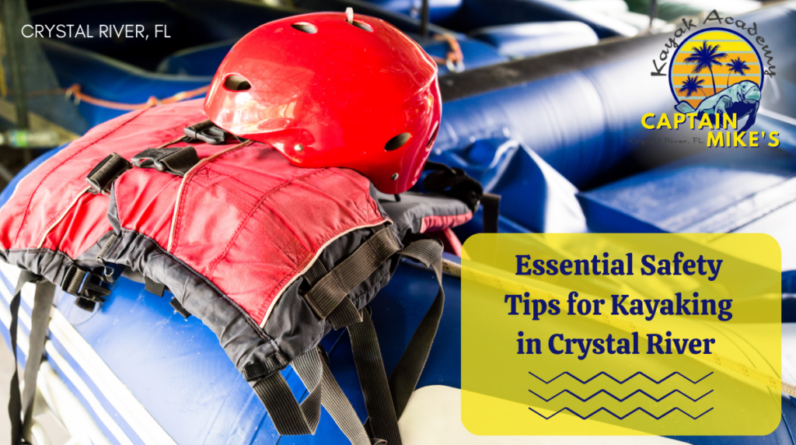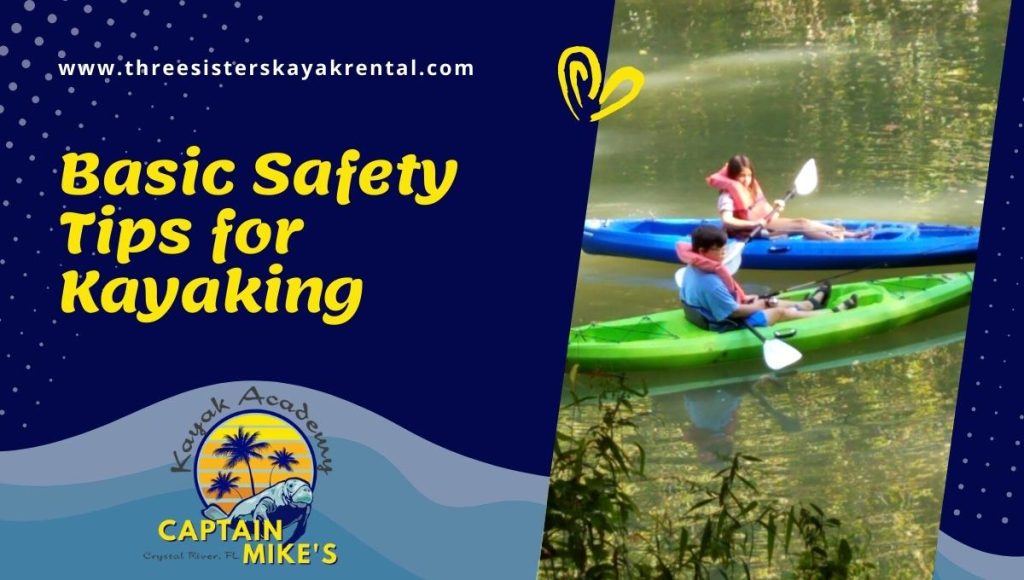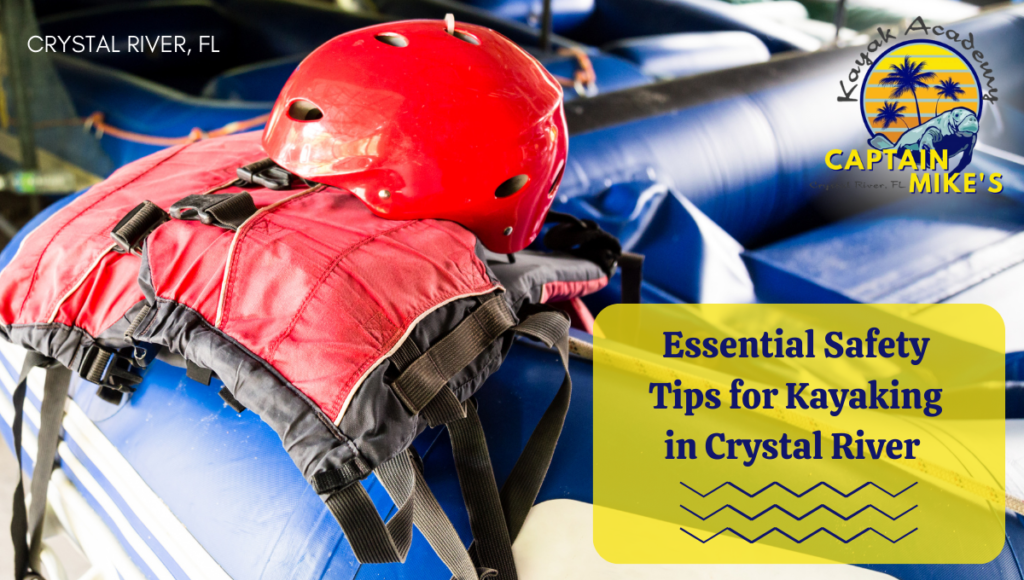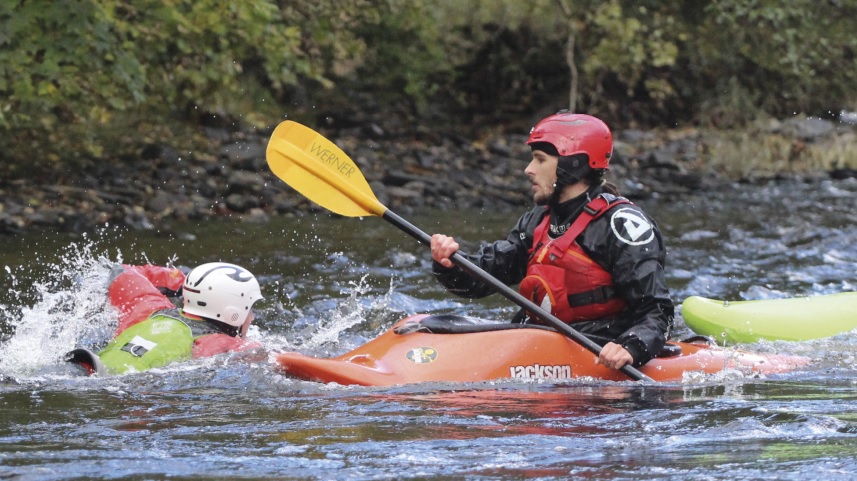
Are you an avid kayaker looking to tackle the exhilarating world of whitewater kayaking? If so, it’s crucial to prioritize safety during your thrilling adventures. The article “Essential Safety Measures for Whitewater Kayaking” provides valuable insights into the necessary precautions you should take when navigating whitewater. Discover the importance of wearing a properly fitted and secure helmet, the significance of wearing a personal flotation device (PFD) at all times, and the vital role of practicing rescue techniques. Stay safe on the rapids with these essential safety measures!
Essential Safety Measures for Whitewater Kayaking
Whitewater kayaking is an exhilarating and challenging adventure sport that allows you to navigate through rushing rapids and turbulent white water. However, it is important to prioritize safety while engaging in this thrilling activity. By following essential safety measures, you can ensure a safe and enjoyable experience on the river. Whether you are a beginner or an experienced paddler, it is crucial to be well-prepared and equipped with the right knowledge and skills. In this article, we will explore the key safety measures that every whitewater kayaker should consider.

This image is property of Amazon.com.
1. Proper Equipment
Before hitting the river, it is essential to have the appropriate gear to ensure your safety. Here are the key pieces of equipment you should have:
1.1 Personal Flotation Device (PFD)
A personal flotation device, commonly known as a PFD or life jacket, is the most important safety equipment for any kayaker. It provides buoyancy and keeps you afloat if you end up in the water. Make sure you have a properly fitting PFD that is suitable for whitewater kayaking. It should be snug, comfortable, and have a secure closure system.
1.2 Helmet
A helmet is essential to protect your head from potential impacts with rocks or other hard surfaces while navigating through rapids. Choose a helmet specifically designed for whitewater kayaking, ensuring it fits securely and covers your entire head, including the back.
1.3 Spray Skirt
A spray skirt creates a waterproof seal between you and the cockpit of your kayak. It prevents water from entering the kayak, which could potentially cause instability or flooding. Ensure your spray skirt fits tightly and is appropriate for the type of kayak you are using.
1.4 Paddle
Selecting the right paddle is crucial for efficient and safe maneuvering on whitewater. Choose a paddle that is the correct length for your height and arm span. Additionally, consider the blade shape and material to ensure optimal performance on the river.
1.5 Protective Clothing
Wearing appropriate clothing is essential for staying safe and comfortable while kayaking in whitewater. Opt for quick-drying and moisture-wicking materials. In colder conditions, wear insulating layers to keep warm. Don’t forget to protect your feet with sturdy, closed-toe footwear, and consider wearing a wetsuit or drysuit to maintain body temperature in cold water.
2. Understanding River Classification
Understanding the classification of rivers is crucial to assess their difficulty and select suitable sections for your skill level. The classification system provides valuable information to ensure your safety on the water.
2.1 International Scale of River Difficulty
The International Scale of River Difficulty is a widely recognized system that classifies rivers based on their difficulty level. It ranges from Class I (easy, gentle moving water) to Class VI (extremely dangerous and unpredictable). Familiarize yourself with this classification system and always choose a river section that matches your skill level.
2.2 Research and Knowledge
Do thorough research about the rivers you plan to kayak. Look for information on water conditions, hazards, flow rates, and any specific challenges associated with the river. Reach out to local paddling communities or associations for advice and recommendations, and consider taking guided trips or courses to enhance your knowledge and skills.
3. Preparing for the Trip
Proper preparation before your kayaking trip is essential for a safe and enjoyable experience. Consider the following aspects when preparing for your whitewater adventure:
3.1 Assessing Personal Skill Level
Honest self-assessment of your kayaking skills is crucial for your safety. Be aware of your limits and select river sections that align with your abilities. Gradually progress to more challenging rivers as you gain experience and confidence in your paddling skills.
3.2 Checking Weather and Water Conditions
Before heading out, thoroughly check the weather forecast and water conditions for the river you plan to kayak. Keep in mind that heavy rain or melting snow can significantly impact water levels and increase the difficulty of the rapids. If conditions are not suitable or exceed your skill level, consider postponing your trip.
3.3 Informing Others
Always inform someone about your kayaking plans, including the planned route, expected duration, and any alternative routes. Provide them with emergency contact numbers and a specific timeline of when they should expect to hear from you. This step is crucial in case of any unforeseen circumstances or emergencies.
3.4 Emergency Plan
Carry an emergency plan with you, detailing what steps to take in different situations. Include information on how to handle equipment malfunctions, capsizing, or an injured paddler. Familiarize yourself with basic rescue techniques and first aid procedures, and carry necessary equipment to handle emergency situations.
4. Practicing Basic Skills
Developing and honing essential kayaking skills is fundamental to your safety on whitewater. Prioritize practicing the following basic skills:
4.1 Wet Exit
Practice a wet exit, which is the technique of safely and quickly exiting your kayak when capsized. Being able to execute a wet exit efficiently ensures you can free yourself from potentially dangerous situations underwater.
4.2 Self-Rescue Techniques
Learn and practice self-rescue techniques such as reentering your kayak after capsizing, emptying water from your kayak, and performing a paddle float self-rescue. These skills are crucial for regaining control and safely continuing your journey.
4.3 Bracing and Rolling
Bracing involves using your paddle or body positioning to prevent a capsize or regain balance. Practice different bracing techniques to improve your stability on the water. Additionally, learning to roll your kayak can be a valuable skill to recover from a capsized position without exiting your kayak.
4.4 Ferrying
Ferrying refers to moving your kayak across the current in a controlled manner. Mastering ferrying techniques allows you to navigate to desired positions on the river, avoid hazards, or reach specific eddies.
4.5 Eddy-Hopping
Eddy-hopping involves moving from one eddy (a calm spot behind a rock or along the riverbank) to another. This skill is essential for rest spots during rapids, scouting upcoming challenges, or providing support to other kayakers.

This image is property of threesisterskayakrental.com.
5. Group Safety Guidelines
Paddling with a group enhances safety and adds an extra layer of support. Implement the following safety guidelines when kayaking with others:
5.1 Establishing Communication Signals
Establish clear communication signals or hand gestures that can be easily understood by all members of the group. These signals can help convey messages or indicate if assistance is needed.
5.2 Buddy System
Implement a buddy system where each kayaker is responsible for the safety of another member. Regularly check in with your buddy and be prepared to provide assistance or rescue in case of emergencies.
5.3 Group Size
Keep your group size manageable and cohesive. Large groups can be challenging to manage, and it becomes harder to ensure everyone’s safety. Aim for a group size where communication and support can be effectively maintained.
5.4 Leader Responsibility
Assign a leader for each paddling excursion who has experience and knowledge specific to the river and its challenges. The leader should be responsible for making decisions, setting the pace, and ensuring the safety of the entire group.
6. Reading the River
Knowing how to read the river and identify potential hazards is crucial for safe navigation. Develop the following skills to enhance your river-reading ability:
6.1 Identifying Hazards
Learn to identify common river hazards such as strainers (objects that allow water to pass through but catch debris), undercut rocks, low-head dams, or steep drops. Understanding potential hazards helps you choose the safest route and react appropriately when encountering such obstacles.
6.2 Understanding Water Features
Familiarize yourself with different water features such as eddies, currents, waves, and holes. Understanding how each feature behaves allows you to navigate them more effectively and make informed decisions on the river.
6.3 Choosing the Right Line
Selecting the right line refers to choosing the safest and most efficient route through rapids or obstacles. Assess the layout of the rapids, identify potential routes, and consider your skill level when deciding on the appropriate line to follow.

This image is property of threesisterskayakrental.com.
7. Proper Technique and Body Position
Developing proper paddling technique and maintaining an optimal body position while kayaking improves control, stability, and efficiency. Focus on the following aspects:
7.1 Forward Stroke
Mastering the forward stroke technique is essential for efficient propulsion and control of your kayak. Practice proper paddle placement, power application, and body rotation to maximize the effectiveness of each stroke.
7.2 Bracing
Strengthen your bracing skills to maintain balance and stability when faced with unexpected obstacles or challenging water conditions. Effective bracing techniques rely on paddle placement, quick reactions, and maintaining a centered body position.
7.3 Edging
Edging refers to tilting your kayak on its side to improve stability and control in different river situations. Learn to edge your kayak by shifting your weight and using your hips to adjust the boat’s angle in relation to the current.
7.4 Body Rotations
Engaging your core and incorporating body rotations into your paddling technique enhances power and control. Practice proper body movements to ensure efficient strokes and maintain stability during maneuvers.
8. Rescues and Safety Skills
Being prepared to handle rescue situations and having knowledge of various rescue techniques is crucial when kayaking in whitewater. Learn and practice the following skills:
8.1 Towing Techniques
Being able to tow a paddler in distress can be a lifesaving skill. Learn different towing techniques using a towline or contact tow to assist a fellow kayaker and safely bring them to shore.
8.2 Throwing/Swiftwater Rescue Techniques
Practice throwing and swiftwater rescue techniques to provide aid to someone in the water. Learn how to throw a rescue bag or use a throw rope, and develop skills in swiftwater swimming to navigate to a person in need of rescue.
8.3 Group Rescue Strategies
Become familiar with group rescue strategies that involve multiple paddlers working together to safely rescue someone in distress. These strategies may include creating a rescue tether, performing a T-rescue, or executing a group live bait rescue.

This image is property of www.go-kayaking.com.
10. Emergency Preparedness and First Aid
While preventative measures are crucial, it is equally important to be prepared for emergencies and have basic first aid knowledge. Consider the following aspects:
10.1 Basic First Aid Knowledge
Gain basic first aid knowledge, including CPR, wound care, and the treatment of common injuries specific to whitewater kayaking. Knowing how to assess and stabilize injuries can make a significant difference in emergency situations.
10.2 Wilderness First Aid Kit
Carry a well-stocked wilderness first aid kit with essential supplies tailored to the demands of whitewater kayaking. Include items such as bandages, antiseptics, a rescue blanket, a whistle, and a communication device.
10.3 CPR and Rescue Breathing
Learning CPR (Cardiopulmonary Resuscitation) and rescue breathing techniques is essential to provide potentially life-saving aid in water-related emergencies. Sign up for a certified CPR course to ensure you are well-prepared to respond in critical situations.
By prioritizing safety through proper equipment, skill development, group guidelines, and emergency preparedness, you can enjoy the thrill of whitewater kayaking while minimizing risks. Remember, safety should always be the top priority during any outdoor adventure. Stay informed, continuously develop your skills and knowledge, and never hesitate to seek professional guidance or training to enhance your safety and enjoyment on the river.






